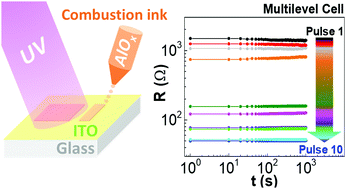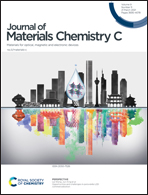Design and synthesis of low temperature printed metal oxide memristors†
Abstract
Resistive switching (RS) devices or memristors have received a lot of attention in the last decade owing to their valuable and interesting properties, such as high-density, switching speed and scalability. Printed techniques are an emergent technology that allows the large-scale production of these devices through direct patterning which decreases the associated costs and provides a more viable process. However, some significant challenges remain to be solved in terms of thermal budget to improve the electrical performance and grant their compatibility with the printing industry. In this work, for the first time, printed combustion-based aluminium oxide (AlOx) RS devices are produced via inkjet printing at low temperature by the combination of thermal annealing (150 °C) and deep ultraviolet (DUV) treatment. These devices present a bipolar resistive switching behaviour with good endurance, high reproducibility (95%) and retention time (105 s), and sufficient ON/OFF ratio to achieve a multilevel cell (MLC) with up to 4 states. The obtained results help to understand the electrical characteristics of printed metal oxide RS devices processed at low temperatures and showcase their potential for hardware security applications.



 Please wait while we load your content...
Please wait while we load your content...